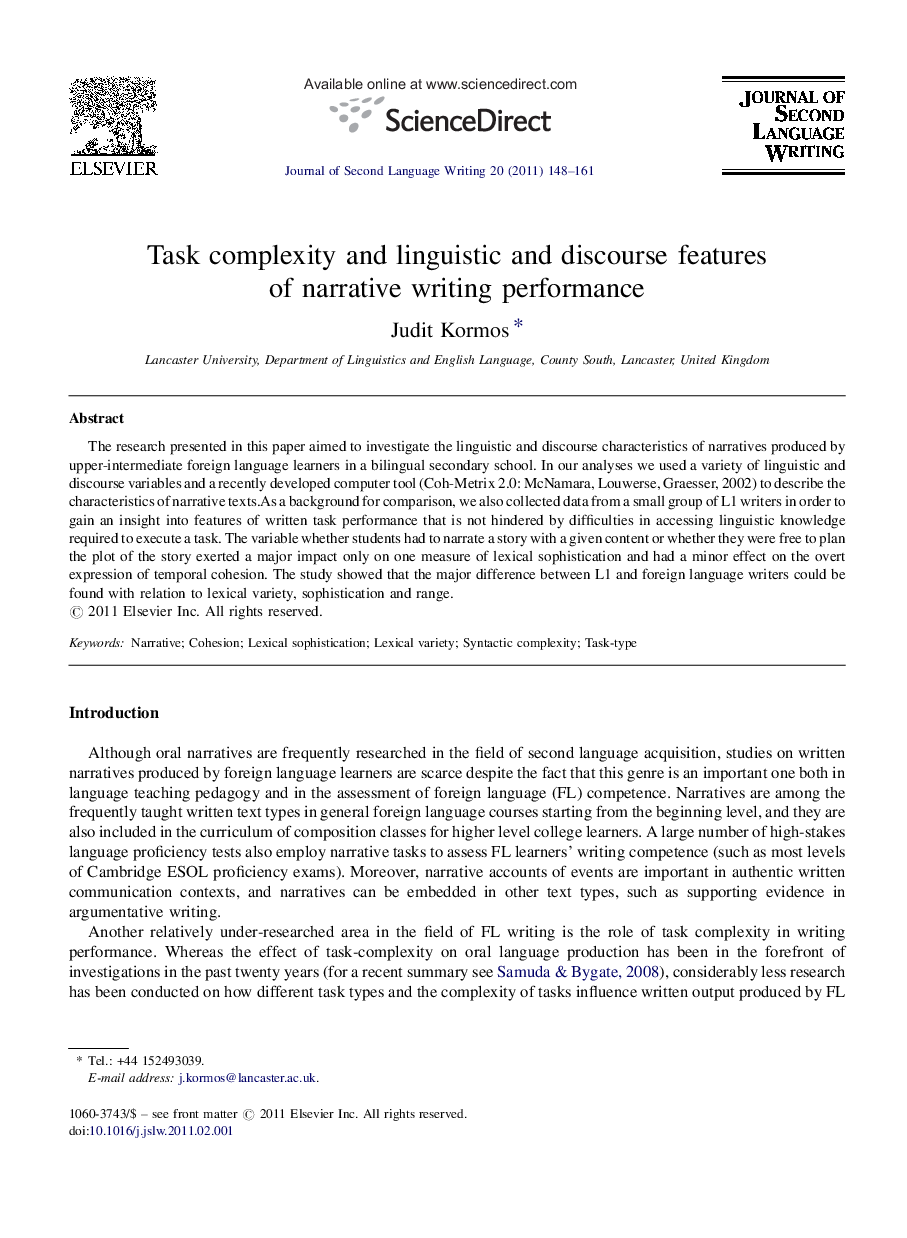| Article ID | Journal | Published Year | Pages | File Type |
|---|---|---|---|---|
| 364139 | Journal of Second Language Writing | 2011 | 14 Pages |
The research presented in this paper aimed to investigate the linguistic and discourse characteristics of narratives produced by upper-intermediate foreign language learners in a bilingual secondary school. In our analyses we used a variety of linguistic and discourse variables and a recently developed computer tool (Coh-Metrix 2.0: McNamara, Louwerse, Graesser, 2002) to describe the characteristics of narrative texts.As a background for comparison, we also collected data from a small group of L1 writers in order to gain an insight into features of written task performance that is not hindered by difficulties in accessing linguistic knowledge required to execute a task. The variable whether students had to narrate a story with a given content or whether they were free to plan the plot of the story exerted a major impact only on one measure of lexical sophistication and had a minor effect on the overt expression of temporal cohesion. The study showed that the major difference between L1 and foreign language writers could be found with relation to lexical variety, sophistication and range.
► New ways in which the cognitive complexity of tasks can be understood and analyzed in L2 writing were proposed. ► The indices measuring lexical competence, clausal complexity and causal cohesion proved to be the most useful in describing task and proficiency-related variation in written narrative performance. ► Task characteristics had an impact on only one measure of lexical sophistication and the overt expression of temporal cohesion. ► Major differences between L1 and L2 writers were found for lexical variety, sophistication and range.
